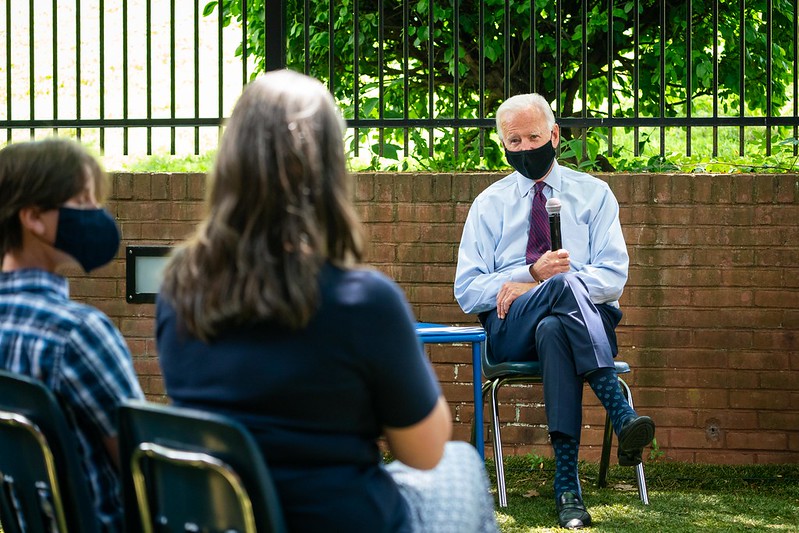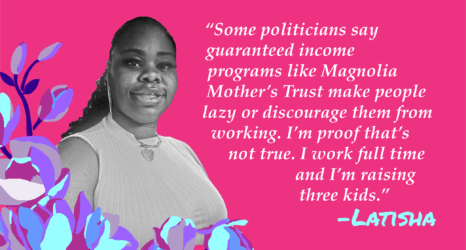
The American Families Plan (AFP), introduced by President Biden on April 28, seeks to provide aid to American families, reduce child poverty, invest in teachers and education, ensure comprehensive paid family leave and subsidize child care—a desperately needed plan that will no doubt boost women’s workforce participation, which has fallen to levels not seen since the 1980s.
However, the AFP cannot be signed into law without support in both the House and evenly-divided Senate, and so far, the plan has been met with resistance from Republican lawmakers: Despite the fact that 60 percent of U.S. voters support the plan, Senate Minority Leader Mitch McConnell (Ky.) recently said Democrats can expect “zero” support from Republicans in Congress.
Nevertheless, Biden administration officials are holding “informal discussions” with policy experts and lawmakers in an attempt to pressure GOP members of Congress and consolidate support for key components of the plan, such as the long-term extension of the child tax credit and paid parental leave—two of many aspects of the AFP with broad bipartisan support.
At a briefing on June 10, Cedric Richmond, director of the White House Office of Public Engagement and a senior advisor to the president, said the American Families Plan, alongside the American Jobs Plan, marks an unprecedented investment in care by the Biden administration. If passed, the AFP will ensure that low- and middle-income families spend only up to 7 percent of their income on child care. By focusing on reducing the cost and increasing the quality of child care, the Biden administration hopes to build a strong workforce that includes mothers and women.
The act also outlines a paid leave plan that will guarantee workers 12 weeks of paid leave by the tenth year of the program. The COVID-19 pandemic has further highlighted the need for paid medical leave to ensure the well-being of workers and prevent disease from spreading. “No worker in America should have to choose between their economic livelihood and their own health,” said Cecilia Rouse, chair of the White House Council of Economic Advisors, at the briefing.
Education and Care in Light of the COVID-19 Pandemic
The AFP also prioritizes improving schools and education: The plan will add four years of free education beyond K-12, providing pre-school to 3- and 4-year-olds, as well as two years of community college after high school.
Increasing access to post-secondary education is particularly relevant now, as the COVID-19 pandemic and switch to virtual learning has led to a decline in college enrollment, especially for community colleges. The AFP plan specifically invests in Historically Black Colleges and Universities (HBCUs) and Tribal Colleges and Universities (TCUs), as well as other minority-serving institutions (MSIs).
The Status of Businesses and Workers
After Biden’s Inauguration Day, with more than 400,000 small businesses having closed in light of the COVID-19 pandemic, the administration quickly got to work on addressing the dual health and economic crises that plagued the nation. The American Rescue Plan passed, providing stimulus checks to most of the general public, as well as small businesses. All of this was done, according to Richmond, in an effort to support a return to work for most Americans, which heavily relies on access to child care.
Rouse says the bill will help businesses as well as workers. When workers have access to paid leave, they are more likely to return to the same employer, growing stability and cutting down on turnover costs. In addition, the Biden administration says the proposed increases to paid parental and family leave would be paid for by the federal government, rather than an employer mandate.
The Biden-Harris administration says they know small businesses rely on a strong workforce, and a strong workforce rests upon the support and consideration of care obligations. The administration is employing a “rising tide lifts all boats” mentality, emphasizing how investments in child care and paid leave will lead to a stronger and more enthusiastic workforce. “A greater public investment will yield a larger and healthier workforce,” said Rouse during the June 10 briefing.
The Biden administration knows U.S. economic progress relies on first uplifting women and families. Efforts in improving care hope to increase the retainment of women in the workforce, as almost 3 million women in the U.S. have left the workforce in the past year alone. When schools and other child care shut down due to COVID-19, research shows that women took on the majority of childcare responsibilities, leaving their jobs or reducing working hours at higher rates than men.
“We need to leave this country better than we found it,” said Richmond at the end of the briefing, “and we found it in a mess.” Rebuilding starts when we prioritize the needs of women, families, people of color, and other underserved communities.
Up next:





